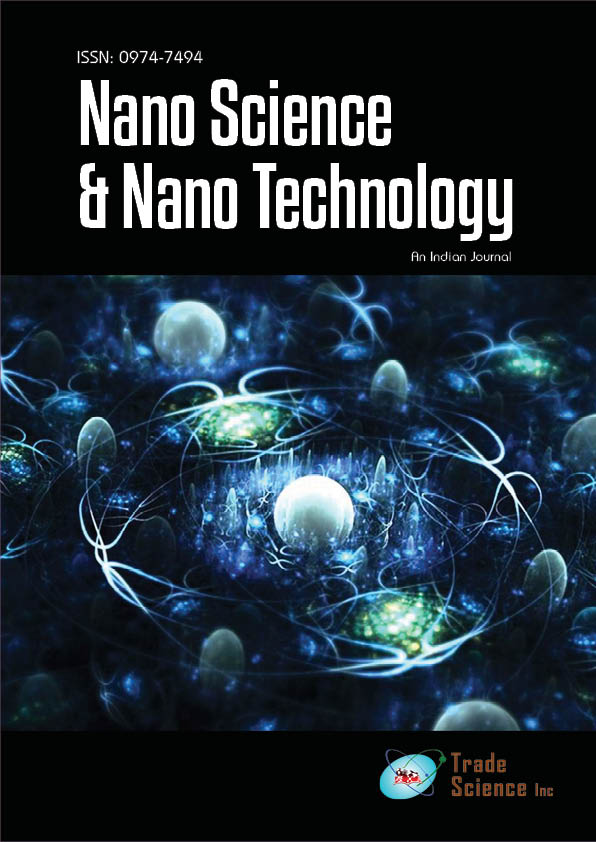Short commentary
, Volume: 16( 1) DOI: 10.37532/ 0974-7419.2022.16(1).142Surfactant Treatment Using Nanoparticles in Individuals with Severe Acne COVID-19: An Overview
- *Correspondence:
- Adrianna Phillips Editorial office, Nanoscience & nanotechnology: An Indian Journal, UK. ; E-mail: info@tsijournals.com
Citation: Adrianna Phillips. Surfactant treatment using nanoparticles in individuals with severe acne COVID-19: an overview. Nano Tech Nano.
Abstract
Coronavirus Disease 2019 (COVID-19) is a worldwide health concern caused by the Severe Acute Respiratory Distress Syndrome Coronavirus 2 (SARS-CoV-2). COVID19 has far outpaced the other two coronavirus infections, Severe Acute Respiratory Syndrome (SARS) and Middle East Respiratory Syndrome (MERS), in terms of patient numbers and economical effect (MERS). COVID-19 is a virus that affects the respiratory system, ranging from airway compliance to epithelial integrity, and can cause a variety of symptoms. At least half of those who test positive are asymptomatic or have just minor symptoms. However, pulmonary problems, such as bilateral pneumonia, affect 15%-30% of individuals. COVID-19 individuals' histological abnormalities are mostly found in the lungs. The presence of SARS-Cov-2 antigen in the respiratory system, including the upper respiratory tract, bronchial epithelium, and alveolar epithelial cells, was verified by immunohistochemistry. COVID-19 induces widespread alveolar damage on both sides, which is followed by endothelial injury, pulmonary vascular endothelial injury, alveolar-capillary injury, protein leakage, and alveolar wall inflammation. Although some COVID-19 traits may match the ARDS criteria, COVID-19 patients with severe hypoxemia can yet have practically normal lung compliance. The quick switch from almost-normal lung compliance to typical ARDS compliance might be related to the natural course of pneumonia or ventilator-induced lung injury (VILI), a kind of lung damage that occurs often in ventilator-supported patients.
Introduction
Coronavirus Disease 2019 (COVID-19) is a worldwide health concern caused by the Severe Acute Respiratory Distress Syndrome Coronavirus 2 (SARS-CoV-2). COVID19 has far outpaced the other two coronavirus infections, Severe Acute Respiratory Syndrome (SARS) and Middle East Respiratory Syndrome (MERS), in terms of patient numbers and economical effect. COVID-19 is a virus that affects the respiratory system, ranging from airway compliance to epithelial integrity, and can cause a variety of symptoms. At least half of those who test positive are asymptomatic or have just minor symptoms. However, pulmonary problems, such as bilateral pneumonia, affect 15%-30% of individuals. COVID-19 individuals’ histological abnormalities are mostly found in the lungs. The presence of SARS-Cov-2 antigen in the respiratory system, including the upper respiratory tract, bronchial epithelium, and alveolar epithelial cells, was verified by immunohistochemistry. COVID-19 induces widespread alveolar damage on both sides, which is followed by endothelial injury, pulmonary vascular endothelial injury, alveolar-capillary injury, protein leakage, and alveolar wall inflammation. Although some COVID-19 traits may match the ARDS criteria, COVID-19 patients with severe hypoxemia can yet have practically normal lung compliance. The quick switch from almost-normal lung compliance to typical ARDS compliance might be related to the natural course of pneumonia or ventilator-induced lung injury (VILI), a kind of lung damage that occurs often in ventilator-supported patients.
Exogenous surfactant replacement therapy
Exogenous surfactant treatment is defined as the administration of exogenous surfactants, either derived from animals or synthetic, to complement or replace endogenous surfactants. An exogenous surfactant that spreads out as a monolayer at the air-liquid interface of the lungs should, in principle, respond to lungs with malfunctioning or inadequate endogenous surfactant. Enhanced lung compliance, reduced ventilator plateau pressure, and/or improved gas exchange are frequent side effects of this response. Exogenous surfactants have been shown in practice to enhance oxygenation and reduce death in RDS neonates before 32 weeks of gestation, where surfactant insufficiency was previously thought to be the cause.
Prospects of nanoparticle-mediated surfactant therapy for patients with COVID-19 ARDS
In several parts of the COVID-19 pandemic, materials science and nanotechnology have been extensively investigated as weapons, including personal protective equipment supplies, medical equipment, and instruments, quick detection and diagnosis platforms, and vaccine formulations. In addition to these uses, materials science and nanotechnology are likely to be exploited for medication delivery to treat COVID-19, despite the lack of clinically established antiviral therapy options.
The use of nanoparticles as a carrier to deliver surfactants to the lungs has the potential to improve therapeutic efficacy while reducing negative side effects. Using nanoparticles to distribute surfactants has several advantages, including extending resistance time in the body (raising clearance half-life) and directing surfactants to particular areas in the lungs. Nanoparticles come in a variety of forms, including polymer-based nanoparticles, lipid-based nanoparticles, inorganic nanoparticles, drug conjugates, and viral nanoparticles, among others. Surfactants can either be physically encapsulated in the nanoparticles or covalently conjugated to them.
Intravenous injection of surfactant-loaded nanoparticles is possible. Surfactants can be loaded into PEG-adorned liposomes and/or poly (lactic-co-glycolic acid) (PLGA) nanoparticles, for example. The PEG-coated nanoparticles can have a longer blood circulation after intravenous injection to prevent the supplied surfactant from being immediately removed by macrophages. Nanoparticles can also be locally concentrated at the site of pulmonary injury in the lungs to provide localized distribution of the surfactant34, thanks to the Increased Permeability and Retention (IPR) effect in inflammatory tissues. As a result, nanoparticles can improve surfactant effectiveness while lowering negative effects.
Exogenous surfactant would be steered towards and targeted to the lung areas that needed it the most in the nanoparticle-enveloped environment. The surfactant complex would have limited contact with the airway content along the route to edematous lung areas, encased and shielded by the nanoparticles until they reach the alveolar space. The surface-active property of the exogenous surfactant is assumed kept to the maximum without the airway content influence. It was recently established that the presence of plasma albumin does not aggravate VILI as long as the endogenous surfactant monolayer is not collapsed by mechanical ventilation. Albumin should not interfere with the action of exogenous surfactant.
When delivered intravenously in nanoparticle capsules, the exogenous surfactant is predicted to reach the targeted lung areas via inflammation-induced increased capillary permeability over a concentration gradient, as designed. When compared to direct intravenous delivery, systemic absorption, metabolism, and excretion should be limited. As a result of the more efficient delivery enabled by nanoparticles, the exogenous surfactant should enhance oxygenation, reduce systemic inflammation, and minimize VILI, as demonstrated in live animal models.
In this light, we propose using nanoparticle-enabled surfactant treatment to give therapeutic advantages for COVID-19-associated ARDS in order to prevent or minimize VILI. The suggested method is viable in the following respects due to the efficacy of nanoparticles in drug delivery and the present practice of employing lipid nanoparticles as a critical component of the new Pfizer/Bio N Tech and Moderna mRNA COVID-19 vaccines. To begin, lipid nanoparticle platforms shield the mRNA sequence from degradation and efficiently deliver the mRNA to the cytosol via endocytosis. Similarly, nanoparticles might shield surfactant from degradation or elimination in the body while transporting it to the areas of the lungs that require it most.

